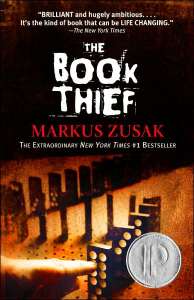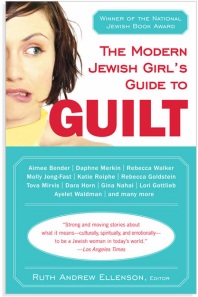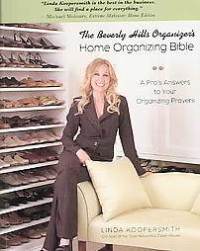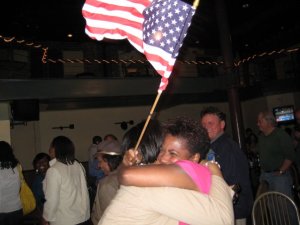OK, obviously I’m falling a bit behind here, and it’s appearing less and less like I will make it to 50 books before July 25. But I’m not giving up (entirely) yet! Especially because the small piece of good news is that I’m actually further behind in the posting than I am in the reading. But since the pressure of writing 3 long reviews is just going to drag this out further, I’m going to do a bit of consolidating here. Short commentary tied together with a nice theme…(if by “nice, I mean “guilty”). No, I did not set out to read three consecutive books about guilt/Jews, but once I finished them all– and had yet to post– the element tying it all together was glaringly obvious…

Jews & Guilt.1 “The Book Thief” By Markus Zusak (2005) 550 pages, Started March 16, finished March 27.
My friend Ruth lent me this one at the very beginning of the book project, but I was slightly daunted by the length… 500+ pages did not seem doable in one week. But a couple of people assured me it was a quick read (one voracious reader friend said she read it in one day!) so I was optimistic that this wouldn’t slow me down too much. And it didn’t– once I got into it, this novel was very absorbing: A German girl, Liesl, moves in with a foster family in 1940s Munich. The family is not Jewish– although they are far more sympathetic to the plight of the Jews than some of their neighbors. A friend of the family comes to hide in their basement, Liesl steals a lot of books, and the whole thing is narrated by Death. Not happy material, but like many young-adult novels, I found this one to be both fascinating and gripping. The narration-by-Death device took a little while to get used to, but this was a very, very worthwhile read. This book provides some interesting answers to the question about what regular German citizens were doing and thinking during the war. Yes, something like 90% of them were members of the Nazi party, but how did they feel about that? (For at least some of them, the short answer was: guilty.)
 Jews & Guilt.2 “The Plot Against America” by Philip Roth (2004) 391 pages, Started approx. April 1, finished April 25
Jews & Guilt.2 “The Plot Against America” by Philip Roth (2004) 391 pages, Started approx. April 1, finished April 25
I typically wouldn’t have jumped right from one WWII historical novel into another, but this one was for the Jewish Book Discussion series on Alternate Histories, and my goal was to read it by the group meeting on April 5 (alas, did not happen…) although by that point I was at least far enough along to join in the conversation. What if Charles Lindbergh ran against– and beat– FDR in 1940? Philip Roth tells this story from the perspective of 9 year old Philip Roth, and it is SCARY. The first third or so of the book focuses on Roth’s family (complete with actual names of actual relatives) and their hometown of Newark NJ– and it is so evocative of real life that by the time things take a turn for the worse, I was already sucked in, completely convinced that this could all be true. It is precisely because this novel is so plausible (at least until the end, anyway) that it is completely terrifying. There’s also plenty of guilt here to go around, mainly having to do with the major sub-plot regarding the family and their neighbors. Despite this being a made-up story, there are many real-life elements worked into the plot (you probably already knew that Lindbergh was famous for being anti-semitic) so it’s also somewhat educational. When I finally finished it, I had a ton of questions and handily, the book has a long section at the back that answers a fair number of them. One last thought- I really did not like the ending. Unlike the rest of the book it felt contrived, and although I mostly liked the first three-quarters, I was also pretty glad to be done with it. There’s only so much energy I can devote to a horror-story version of 1940s America.

Jews & Guilt.3 “The Modern Jewish Girl’s Guide to Guilt” Edited by Ruth Andrew Ellenson (2005) 304 pages, started mid-April, finished May 1.
I broke my rule of finishing a book before starting another with this one– I needed a break from reading about World War II and my mom returned this to me at just the right moment– along with her recommendation: “You’re going to really like this”. I’ve owned this book for a few years– a friend sent it to me when it came out, and unbeknownst to me until I started reading it, my husband actually knows the editor. (Yes, it is a small Jewish world indeed….) Not surprisingly, I loved this collection. Reading these essays was like having a series of wonderful conversations about family, dating, marriage, kids, work, etc. etc. with a bunch of really close girlfriends. (It actually made me miss a lot of my old (long-distance) friends, many of whom I don’t get to spend nearly enough time catching up with these days.) Some of the essays were heavy and intense, some were humorous, but I related in some ways to almost all of them. Especially the last one, by Susan Shapiro, whose essay on “Quitting Guilt” felt it could have been a letter written directly to me. (Although I suspect I’m not the only person who feels that way when reading about learning to say No…) I’ve read material by some of these women before (and the new-ish novel “Book of Dahlia, by one of the writers, Elisa Albert, is something I’ve been looking forward to reading for close to a year) but now I have a whole new list of authors to look for. It was fun to read this incredible group of Jewish Women writers all in one place and now, assisted by the detailed bio section at the end, I have some new additions to my list of what/who I want to be reading next.
 Book 28: “Trinny and Susannah: What you wear can change your life” By Trinny Woodall and Susannah Cnstantine (2005) 264 pages; Started and finished on June 19.
Book 28: “Trinny and Susannah: What you wear can change your life” By Trinny Woodall and Susannah Cnstantine (2005) 264 pages; Started and finished on June 19. Book 27: “The Beverly Hills Organizer’s Home Organizing Bible” By Linda Koopersmith (2005) 168 pages; Started and finished on June 17.
Book 27: “The Beverly Hills Organizer’s Home Organizing Bible” By Linda Koopersmith (2005) 168 pages; Started and finished on June 17.
 Jews & Guilt.2 “The Plot Against America” by Philip Roth (2004) 391 pages, Started approx. April 1, finished April 25
Jews & Guilt.2 “The Plot Against America” by Philip Roth (2004) 391 pages, Started approx. April 1, finished April 25
 “The Last Jews of Kerala” By Edna Fernandes (2008); 222 pages- Started March 1, finished March 14.
“The Last Jews of Kerala” By Edna Fernandes (2008); 222 pages- Started March 1, finished March 14.



 “Assassination Vacation” By Sarah Vowell (2005); 255 pages
“Assassination Vacation” By Sarah Vowell (2005); 255 pages


